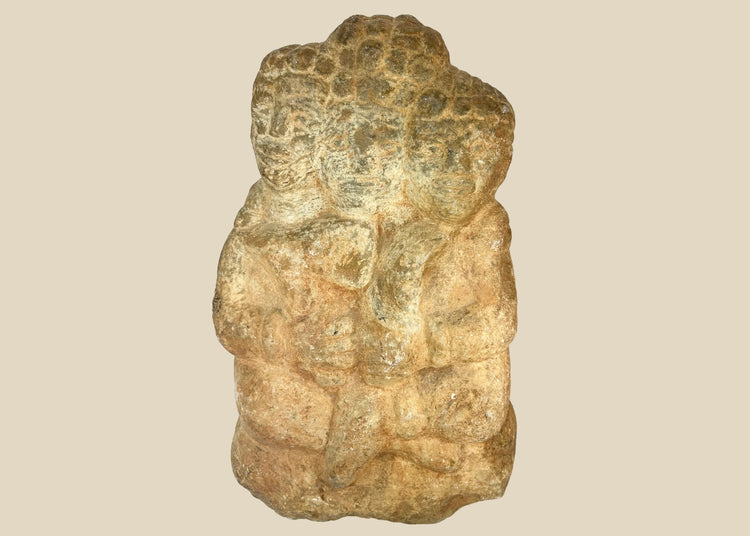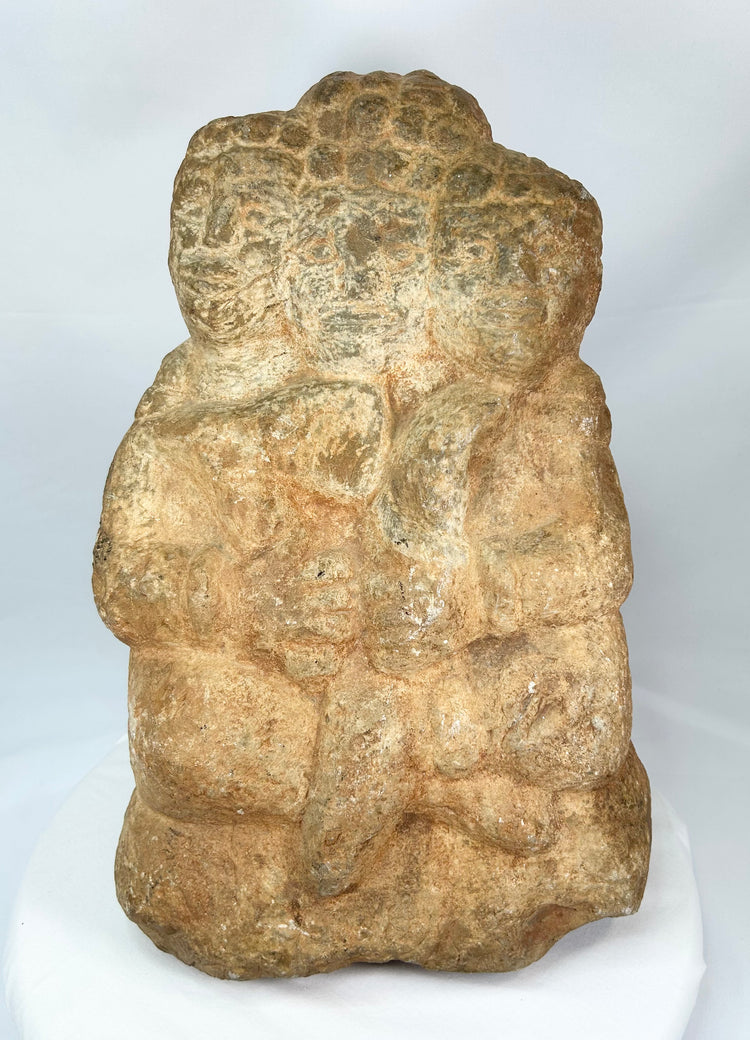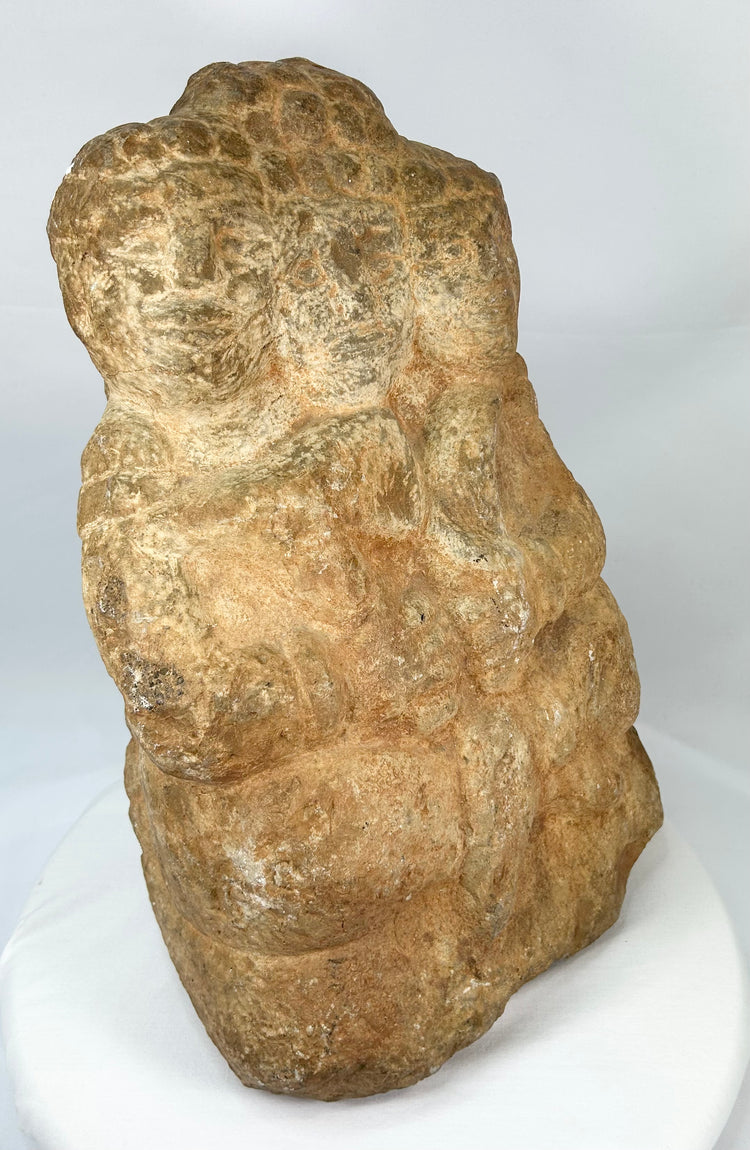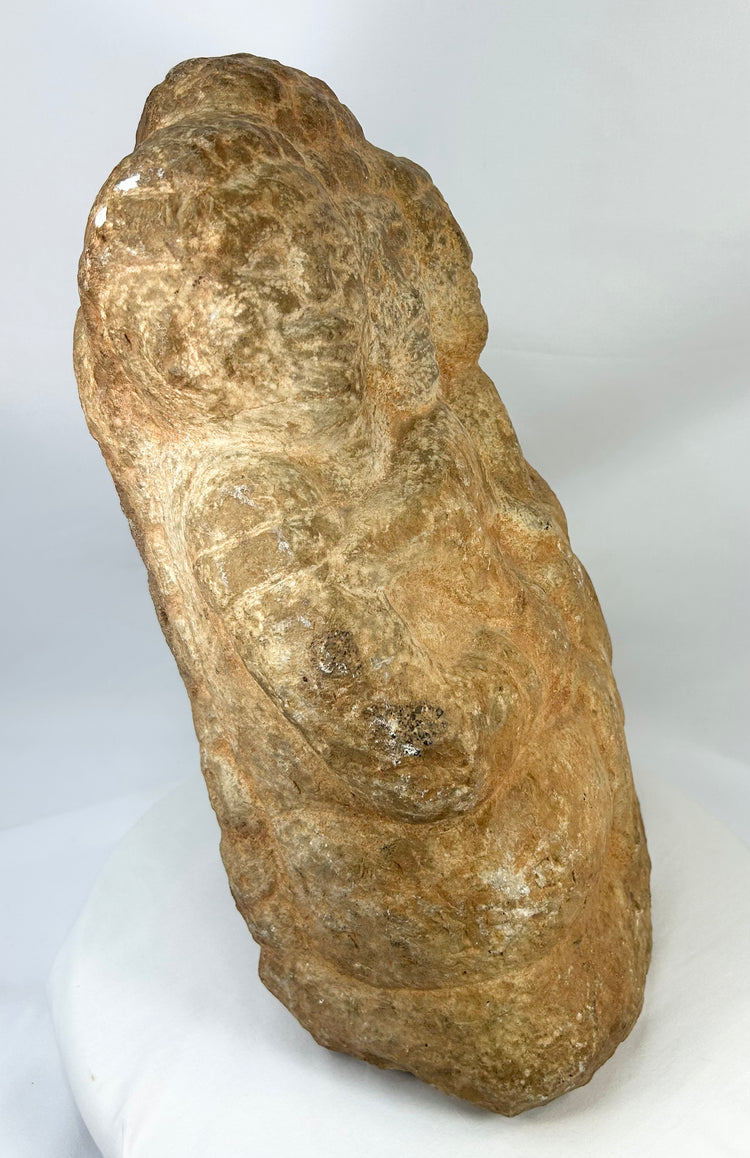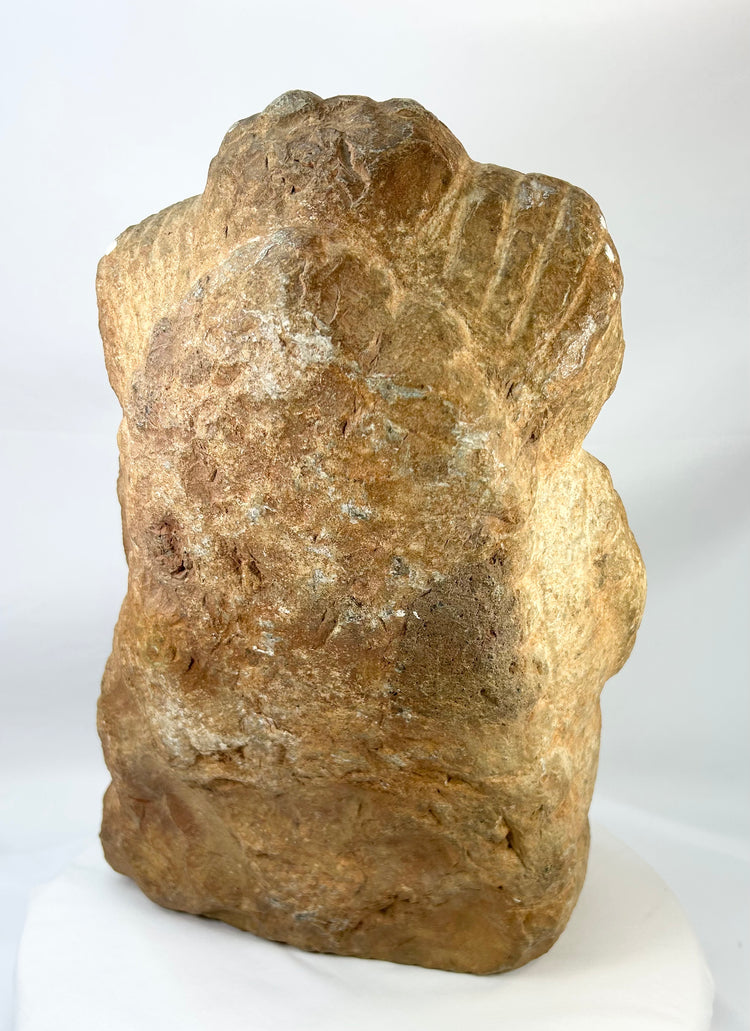Majapahit Stone Sculpture of Three-Faced Brahma | 14th–15th Century | Indonesian Hindu Artifact for Sale
Description
More
Less
Historical Context & Origin
Region: Indonesia (Java, Majapahit Kingdom)
Material: Volcanic andesite/basalt stone
Period: 14th–15th Century CE
Description
Own a rare and museum-worthy Majapahit stone sculpture of Brahma, the Hindu god of creation, dating to the 14th–15th century CE. This exceptional three-faced carving originates from Java, Indonesia, during the height of the Majapahit Kingdom — a period renowned for its fusion of Hindu and Buddhist artistry. The sculpture depicts Brahma with three serene faces, each rendered with arched brows, almond eyes, and calm expressions beneath a tall, tiered crown. Carved from dense volcanic andesite stone, the figure represents divine omniscience and the creative power central to Hindu cosmology. Its large size and temple-style craftsmanship suggest it once formed part of a shrine or sacred courtyard ensemble within a Javanese temple.
Features
- Monumental Temple Origin: Standing approximately 17 inches high, this sculpture is among the few surviving examples of large-scale Brahma figures from the Majapahit period, likely created for a royal or temple setting
- Distinct Three-Faced Design: Each visage of Brahma embodies a different cosmic aspect — creation, preservation, and wisdom — representing Hindu theological mastery in pre-Islamic Indonesia
- Certified Provenance: Documented in the Cecil Blocker Collection (1955–1958) and exhibited at the Cincinnati Art Museum in 1985, confirming its authenticity and institutional recognition
- Archaeological Significance: Unearthed during a tiger pit excavation in Java, offering a rare archaeological context that enhances its historical narrative
- Museum Exhibition Record: Displayed at the Cincinnati Art Museum, March 7, 1985, validating its historical and artistic importance
Cultural Significance
This sculpture embodies the spiritual sophistication of the Majapahit Kingdom, a powerful empire that harmonized Hindu and Buddhist beliefs. Brahma, as the god of creation, symbolizes wisdom, divine order, and the eternal cycle of existence. The three-faced depiction mirrors the Javanese adaptation of Indian theology, illustrating Indonesia’s pivotal role as a cultural bridge between South and Southeast Asia.
Condition
Excellent for its age, with stable structure and natural surface patina typical of ancient volcanic stone. Minor surface wear consistent with antiquity and outdoor temple exposure.
Dimensions (approximate)
Height: 17 in
Width: 11 in
Depth: 6.6 in
Age
Approximately 600–700 years old
Explore and Learn More
Read from Our Blog: The Three-Faced God of Java – Unearthing Majapahit’s Lost Masterpiece
View the Cincinnati Art Museum's Collection, Where This Was Once Exhibited: https://www.cincinnatiartmuseum.org/
See Other Three Faces of Brahma Artifacts and Learn Their Stories at: The Penn Museum
Description
Historical Context & Origin
Region: Indonesia (Java, Majapahit Kingdom)
Material: Volcanic andesite/basalt stone
Period: 14th–15th Century CE
Description
Own a rare and museum-worthy Majapahit stone sculpture of Brahma, the Hindu god of creation, dating to the 14th–15th century CE. This exceptional three-faced carving originates from Java, Indonesia, during the height of the Majapahit Kingdom — a period renowned for its fusion of Hindu and Buddhist artistry. The sculpture depicts Brahma with three serene faces, each rendered with arched brows, almond eyes, and calm expressions beneath a tall, tiered crown. Carved from dense volcanic andesite stone, the figure represents divine omniscience and the creative power central to Hindu cosmology. Its large size and temple-style craftsmanship suggest it once formed part of a shrine or sacred courtyard ensemble within a Javanese temple.
Features
- Monumental Temple Origin: Standing approximately 17 inches high, this sculpture is among the few surviving examples of large-scale Brahma figures from the Majapahit period, likely created for a royal or temple setting
- Distinct Three-Faced Design: Each visage of Brahma embodies a different cosmic aspect — creation, preservation, and wisdom — representing Hindu theological mastery in pre-Islamic Indonesia
- Certified Provenance: Documented in the Cecil Blocker Collection (1955–1958) and exhibited at the Cincinnati Art Museum in 1985, confirming its authenticity and institutional recognition
- Archaeological Significance: Unearthed during a tiger pit excavation in Java, offering a rare archaeological context that enhances its historical narrative
- Museum Exhibition Record: Displayed at the Cincinnati Art Museum, March 7, 1985, validating its historical and artistic importance
Cultural Significance
This sculpture embodies the spiritual sophistication of the Majapahit Kingdom, a powerful empire that harmonized Hindu and Buddhist beliefs. Brahma, as the god of creation, symbolizes wisdom, divine order, and the eternal cycle of existence. The three-faced depiction mirrors the Javanese adaptation of Indian theology, illustrating Indonesia’s pivotal role as a cultural bridge between South and Southeast Asia.
Condition
Excellent for its age, with stable structure and natural surface patina typical of ancient volcanic stone. Minor surface wear consistent with antiquity and outdoor temple exposure.
Dimensions (approximate)
Height: 17 in
Width: 11 in
Depth: 6.6 in
Age
Approximately 600–700 years old
Explore and Learn More
Read from Our Blog: The Three-Faced God of Java – Unearthing Majapahit’s Lost Masterpiece
View the Cincinnati Art Museum's Collection, Where This Was Once Exhibited: https://www.cincinnatiartmuseum.org/
See Other Three Faces of Brahma Artifacts and Learn Their Stories at: The Penn Museum
You May Also Like




























